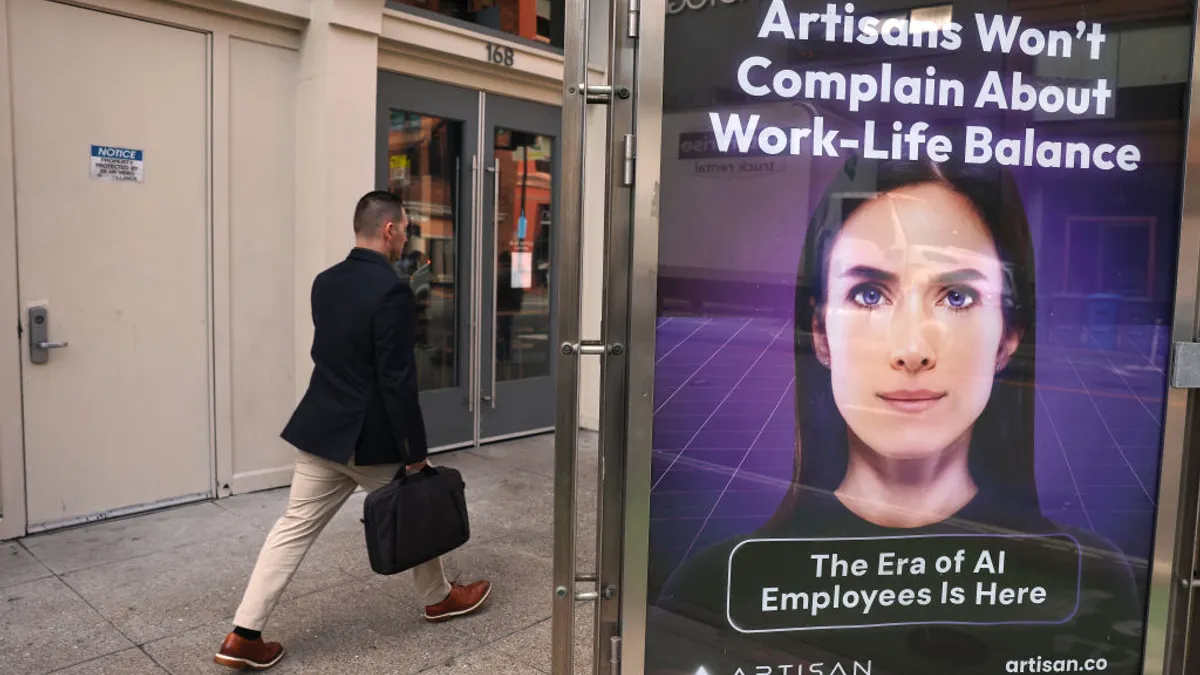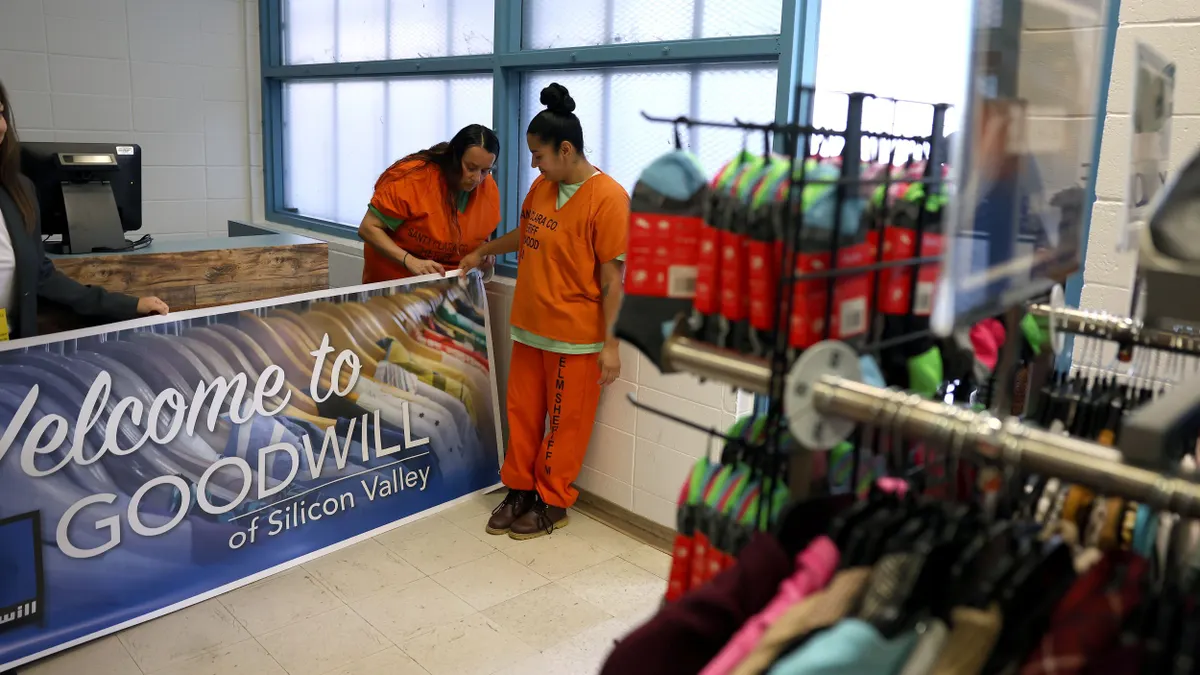Friendship at work can be a magical thing — and, potentially, representative of an organization’s health.
Friendship, sponsorship, mentorship and trust are all aspects of social capital, a force at work that can encourage “stickiness” between employees and their organizations. But as Brooke Weddle, a leader in McKinsey’s people and organizational performance practice explained to HR Dive, it is inherently fragile — and has been deeply depleted by the pandemic, she said.
Even beyond now “table stakes” offerings like flexible work, connection at work can be the differentiating factor that keeps workers from jumping ship, she explained. The top three reasons employees leave, as reported to McKinsey, include a lack of sense of belonging, not feeling valued by a manager and not feeling valued by the organization — all of which represent a dearth of that connective stickiness, Weddle noted.
On the other hand, employees with a strong feeling of social capital were 1.5 times more likely to feel a sense of belonging, 1.5 times more likely to feel engaged and 2 times more likely to have sponsorship at work compared to those who felt disconnected, Weddle said. In other words, these workers felt looked out for and listened to, and, perhaps most importantly to employers, were enabled to do their best work.
But how do employers create workplaces where people feel they can speak together, trust each other and build something together? Keep an eye on your social networks, Weddle said, and learn to see what marks “bridge builder” behavior.
Know your bridge builders
Some organizations are already very good at emphasizing company purpose right at the top of their talent funnels, Weddle said, which is an important first step in creating that sticky web. People want to feel like they are a part of something and they want to know how they fit into the bigger picture. But social capital gets more granular than that.
There’s a reason Gallup, in its workplace polling, asks respondents whether they have a best friend at work, Weddle said. “This is a real phenomenon. Employers can help cultivate that.”
Outside of encouraging employees to find time to talk about nonwork-related things, employers can use data and social network mapping to encourage connection building — and figure out what connection even looks like at their organizations.
“Bring some data to the table,” Weddle said. “Imagine having a map of connections across the organization. How often am I working outside my function? How deep are those ties?”
These social network maps may reveal an organization’s bridge builders — people who are very connected within the organization, even outside their function’s typical circles. Akin to enlisting change champions to help an employer communicate new benefits at work, for example, bridge builders are likely people who are naturally good at or primed for making connections with others, and thus can be enlisted to encourage further connection throughout the workplace — or at the very least, understand it, Weddle noted.
Find the influencers and encourage trust
So what does that data look like?
While employers likely have tools that can track how often workers are in meetings or emailing, Weddle’s organization uses a tool that asks employees a simple question: Who do you go to in the organization for advice?
The answers to this question can reveal who is influential in a company — not through hierarchy but through trust, Weddle said. “For whatever reason, people trust what they’re saying,” she said; people like that are valuable.
To make trust valued across the organization, employers — especially of knowledge workers — can make connection an element of a worker’s performance review, Weddle said.
“We are evaluated on our followership,” Weddle said. “How many people do I have in my network who said ‘yeah, I want to follow her to the next project’? I am evaluated on that.” Particularly for contract or project-based work, she said, “If I don’t have followership, what is the point?”
Be aware of who has access to connection
The pandemic especially depleted social capital for women, McKinsey’s study noted. While 28% of men felt more connected to their networks and organizations over the past two years, only 16% of women said the same. Similarly, only 12% of women said they had more contact with their networks over the course of the pandemic, compared to 24% of men.
If social networks represent the stickiness that keeps workers happily engaged within their organizations, this spells bad news for employers concerned about the diversity of their workforces.
“We didn’t go into other demographics, but I would have the hypothesis that, with socioeconomic status or race, you would see similar differences,” Weddle said. “It’s deeply troubling because we know people are leaving the workforce.”
Similar disparities can be witnessed between front-line workers and senior leaders in organizations, Weddle added.
Employers can engineer the building of social capital to encourage diverse maps of networks, she said. “You don’t want women only talking to women,” and front-line workers only talking to front-line workers, Weddle said. “You are creating a mix.”
For example, employers can map their organizations’ sponsorship networks to see who is sponsoring who. “When you map those, you can see people have their mini-mes set up as their sponsorees,” Weddle said. Employers can incentivize change in that regard, she said — and perhaps help workers feel more valued by their organizations overall.





















